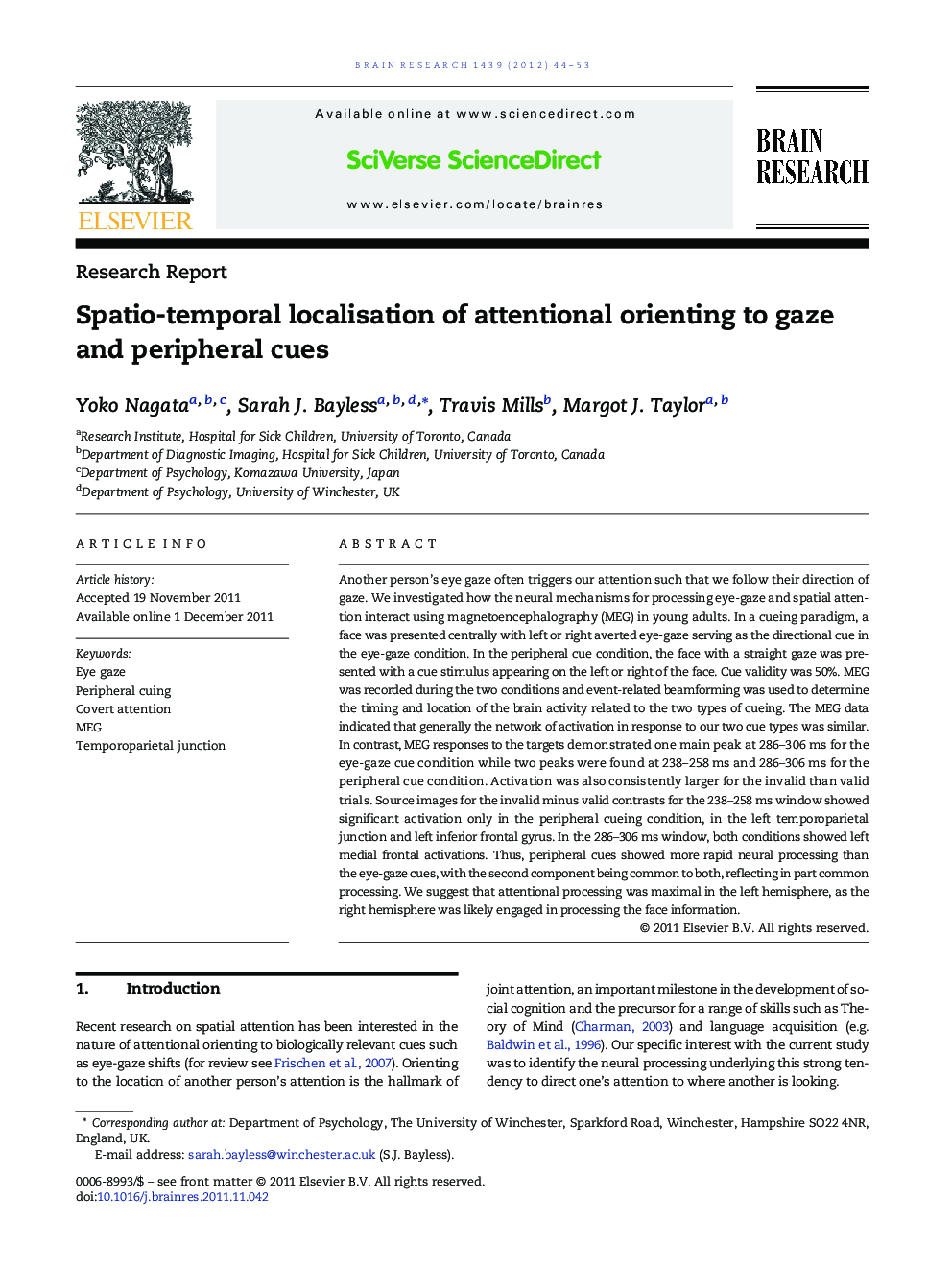| کد مقاله | کد نشریه | سال انتشار | مقاله انگلیسی | نسخه تمام متن |
|---|---|---|---|---|
| 4325445 | 1614000 | 2012 | 10 صفحه PDF | دانلود رایگان |

Another person's eye gaze often triggers our attention such that we follow their direction of gaze. We investigated how the neural mechanisms for processing eye-gaze and spatial attention interact using magnetoencephalography (MEG) in young adults. In a cueing paradigm, a face was presented centrally with left or right averted eye-gaze serving as the directional cue in the eye-gaze condition. In the peripheral cue condition, the face with a straight gaze was presented with a cue stimulus appearing on the left or right of the face. Cue validity was 50%. MEG was recorded during the two conditions and event-related beamforming was used to determine the timing and location of the brain activity related to the two types of cueing. The MEG data indicated that generally the network of activation in response to our two cue types was similar. In contrast, MEG responses to the targets demonstrated one main peak at 286–306 ms for the eye-gaze cue condition while two peaks were found at 238–258 ms and 286–306 ms for the peripheral cue condition. Activation was also consistently larger for the invalid than valid trials. Source images for the invalid minus valid contrasts for the 238–258 ms window showed significant activation only in the peripheral cueing condition, in the left temporoparietal junction and left inferior frontal gyrus. In the 286–306 ms window, both conditions showed left medial frontal activations. Thus, peripheral cues showed more rapid neural processing than the eye-gaze cues, with the second component being common to both, reflecting in part common processing. We suggest that attentional processing was maximal in the left hemisphere, as the right hemisphere was likely engaged in processing the face information.
► Neural mechanisms underlying gaze-cues and peripheral cues were investigated.
► MEG assessed temporal-spatial activation patterns to the two cues types.
► Both cue conditions elicited activation of the exogenous attention network.
► Peripheral cues showed greater activation in left frontal & temporoparietal areas.
Journal: Brain Research - Volume 1439, 23 February 2012, Pages 44–53